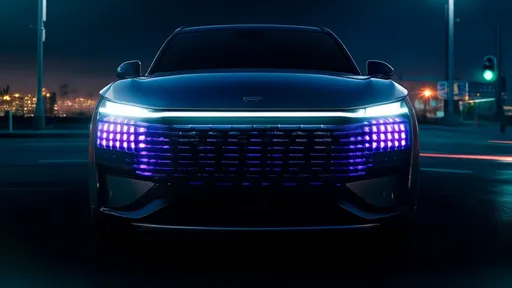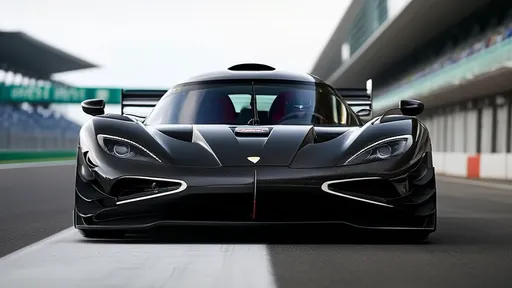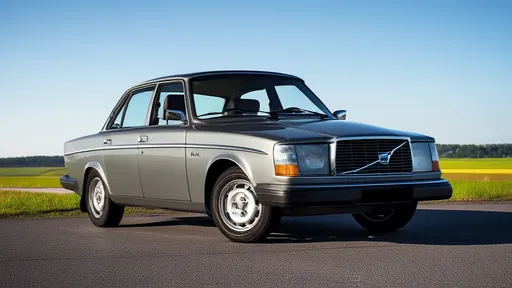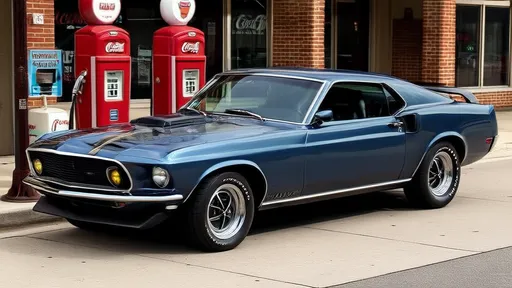The Ford Mustang is more than just a car—it's a cultural icon that redefined American automotive history. When it debuted in 1964, it sparked a revolution, creating an entirely new class of vehicles known as "pony cars." With its sleek design, affordable price, and powerful performance, the Mustang captured the imagination of a generation and became an instant classic. Over the decades, it has evolved while staying true to its roots, embodying the spirit of freedom, rebellion, and raw horsepower.
The Birth of a Legend
Before the Mustang, American cars were largely divided into two categories: bulky, gas-guzzling muscle cars and smaller, less powerful economy vehicles. Ford saw an opportunity to bridge the gap—a car that combined sporty styling with everyday practicality. Lee Iacocca, then a rising executive at Ford, championed the idea, believing that younger buyers wanted something stylish yet affordable. The result was the 1964½ Ford Mustang, unveiled at the New York World’s Fair. Priced at just $2,368, it flew off dealership lots, selling over 22,000 units on its first day and a staggering 400,000 within a year.
What set the Mustang apart was its versatility. Buyers could choose from multiple body styles—coupe, convertible, and later the fastback—along with a range of engine options, from the modest inline-six to the thunderous 289 cubic-inch V8. This "customizable" approach allowed drivers to tailor the car to their tastes, whether they wanted a stylish cruiser or a weekend drag racer. The Mustang wasn’t just a car; it was a statement.
The Pony Car Revolution
The Mustang’s success didn’t go unnoticed. Competitors scrambled to create their own versions, giving rise to the "pony car" segment. Chevrolet answered with the Camaro, Pontiac with the Firebird, and Chrysler with the Barracuda. But none could quite match the Mustang’s blend of charisma and performance. The term "pony car" itself became synonymous with the Mustang’s formula: a long hood, short deck, and rear-wheel-drive layout, packaged in a compact, affordable frame.
By the late 1960s, the Mustang had cemented its place in pop culture. It starred in movies like Bullitt, where Steve McQueen’s high-speed chase through San Francisco became legendary. It dominated racetracks, with Carroll Shelby’s tuned GT350 and GT500 models terrorizing the competition. Even music couldn’t escape its influence—Wilson Pickett’s "Mustang Sally" and the Beatles’ "Drive My Car" (featuring a Mustang in early drafts) further solidified its status as a symbol of cool.
Surviving the Oil Crisis and Reinvention
The 1970s brought challenges. Stricter emissions regulations and the oil crisis forced automakers to prioritize fuel efficiency over power. The Mustang, like many muscle cars, suffered. The once-mighty V8s were strangled by smog controls, and the second-generation Mustang II, though successful in its own right, was a shadow of its former self. Yet, Ford adapted. The Mustang II kept the nameplate alive during tough times, proving that even in a weakened state, the brand had staying power.
The 1980s and ’90s saw a gradual return to form. The Fox-body Mustang, introduced in 1979, embraced a more modern, aerodynamic design while recapturing some of the performance lost in the previous decade. The 5.0-liter V8 became a favorite among enthusiasts, and by the 1990s, the Mustang had regained much of its swagger. The 1994 SN-95 redesign brought back retro styling cues, hinting at the heritage-driven approach Ford would later embrace.
The Modern Era: Honoring the Past, Embracing the Future
In 2005, Ford took a bold step with the fifth-generation Mustang, a car that paid direct homage to the original 1964 model. The retro-futuristic design was a hit, blending classic proportions with modern engineering. Under the hood, the 4.6-liter V8 (and later the 5.0 Coyote engine) delivered the kind of power enthusiasts had been craving. This era also saw the return of high-performance variants like the Shelby GT500, now packing supercharged horsepower figures that would have been unthinkable in the ’60s.
Today, the Mustang continues to evolve. The current generation offers everything from a turbocharged four-cylinder EcoBoost model to the snarling, 760-hp Shelby GT500. There’s even an all-electric Mustang Mach-E, proving that the brand can adapt to changing times without losing its identity. Through every iteration, one thing remains constant: the Mustang’s ability to capture hearts and turn heads.
The Legacy Lives On
Six decades after its debut, the Ford Mustang remains a benchmark for American performance cars. It has survived industry shifts, economic downturns, and changing consumer tastes, all while maintaining its rebellious spirit. Whether it’s the growl of a vintage 289 or the whine of a modern supercharger, the Mustang’s sound is unmistakable—a reminder that some legends only get better with time.

By /Jun 15, 2025

By /Jun 15, 2025

By /Jun 15, 2025

By /Jun 15, 2025

By /Jun 15, 2025

By /Jun 15, 2025

By /Jun 15, 2025

By /Jun 15, 2025

By /Jun 15, 2025

By /Jun 15, 2025

By /Jun 14, 2025

By /Jun 14, 2025

By /Jun 14, 2025

By /Jun 14, 2025

By /Jun 14, 2025

By /Jun 14, 2025

By /Jun 14, 2025